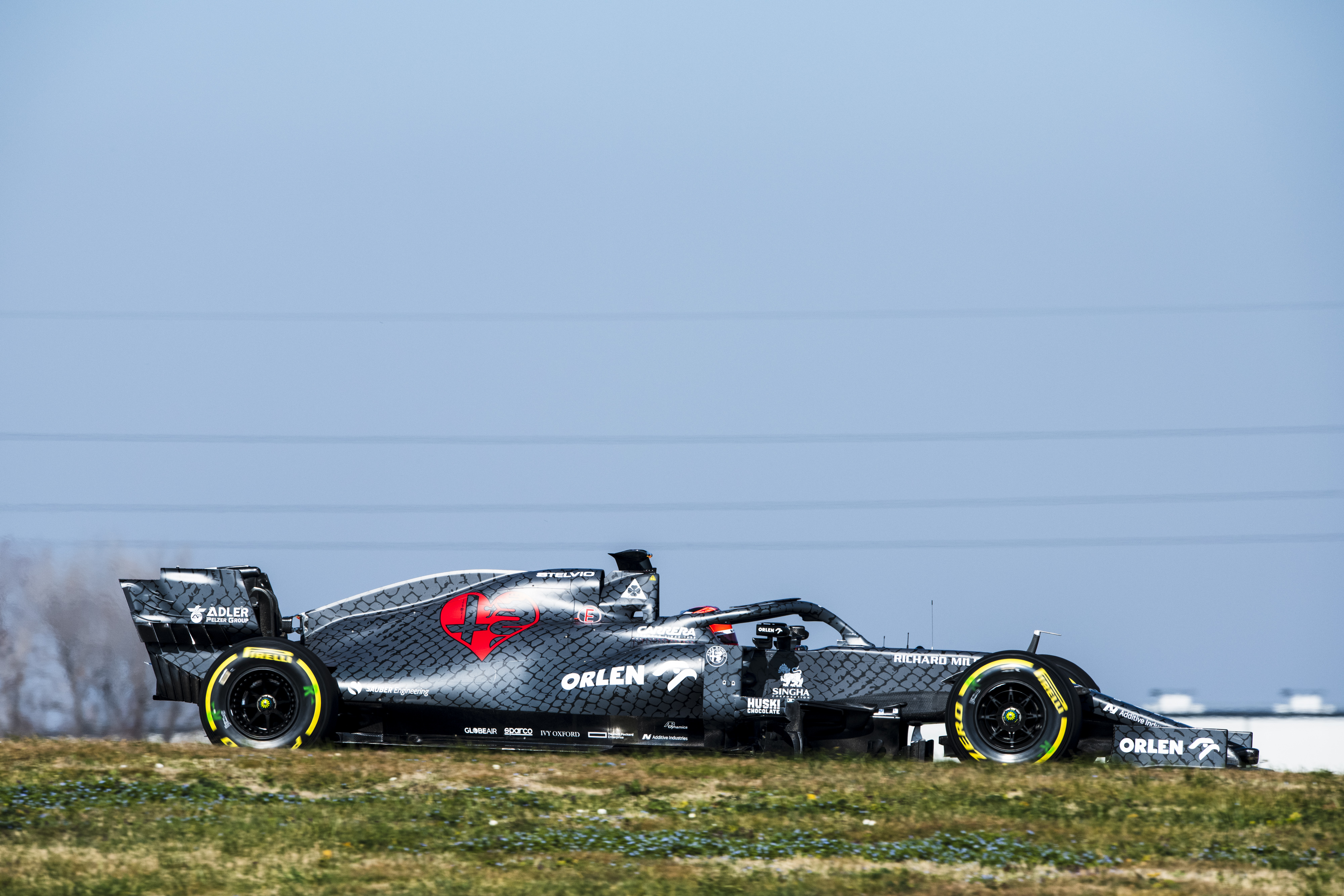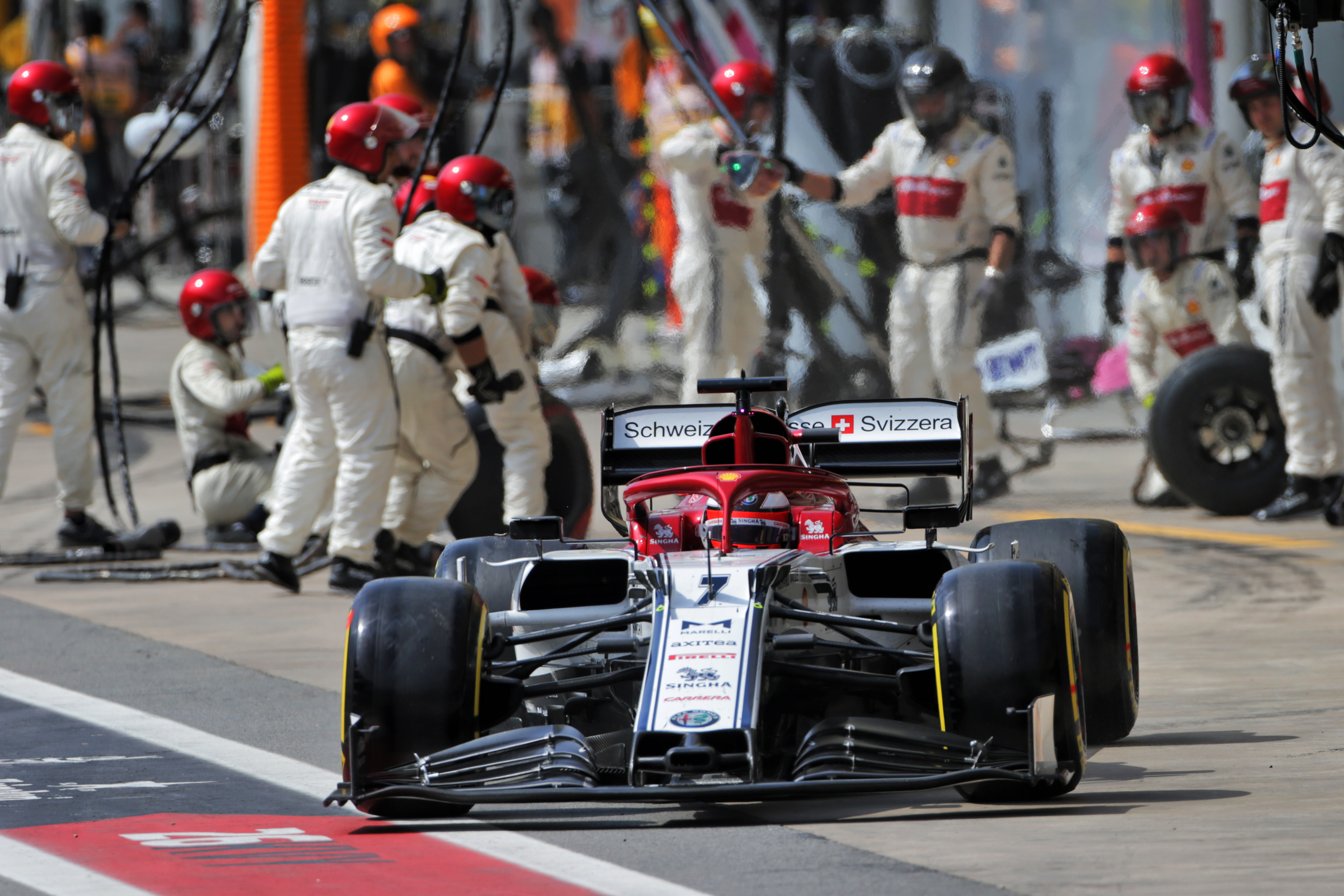Up Next

It’s difficult to form an opinion on the new 2020 Alfa Romeo Formula 1 car as I haven’t seen much detail, but from what we have seen in the photographs from the Fiorano shakedown there are some things we can ascertain about the design.
Alfa Romeo has retained the Ferrari-style front wing. It probably sweeps down at the outboard end more than anyone else but the team must be happy that it can get the required car balance from that sort of package.
It also has the now-standard lowered side-impact tube concept separating the undercut sidepod from the radiator intake.
Interestingly, the radiator intake looks larger than on the Ferrari. With the same cooling requirements under the bonnet and more cooling coming in from the rollover bar area than on the Ferrari, you would have thought that these could have been that little bit smaller.
The rollover bar intake area has a staggered intake. The front triangular one is similar to Ferrari and Haas and is probably the turbo intake, while the one behind is for cooling some internal components. This could be quite a good solution as it’s the turbo intake that is flow sensitive.
When the driver closes the throttle at the end of a straight, it stops the airflow going through this area and with some other designs it then flows down the engine cover and can create turbulence, which can affect the rear wing.
With this solution, that spillage will first be collected by the cooling ducts. It will still spill down the engine cover but not quite as much as if these duct inlets were all in line.

The trend of all these new cars is pretty similar and that is what you would expect when the rules are more or less stable. The objective is to recognise anything that was negatively affecting your performance last season, have a go at improving it and just tidy up everything else to make it do that little bit more of what it already does. So it’s no surprise to see Alfa also taking an evolutionary approach.
Mercedes summed it up pretty well: try to open some doors for future development, don’t necessarily go through them just yet, make sure what you have is working as predicted and then start your development plan.
There will be more to learn from this car when we can see it up close at Barcelona so we’ll have more on it next week. But no matter what details unfolds the big challenge is to keep the wider Alfa Romeo company happy.
It was the kind of season that has you tearing your hair out
To do that, this team must perform better than last season. And to do that, the team must be honest and self-critical if it is to challenge for the coveted fourth place in the constructors’ championship – which is what it should be aiming for.
Of all the 10 teams on the F1 grid last year, Alfa Romeo was the one that I struggle with in terms of explaining its lack of performance. This is made more difficult by being clouded by its inconsistency and I’m pretty sure the Sauber-run team was as confused by it all as I was.
If you look at the last three races of the season, the Alfas finished 11th/14th in the United States, fourth/fifth in Brazil and 13th/16th in Abu Dhabi. Obviously the end result of any race can be influenced by many factors – and although Interlagos was an eventful race Alfa also qualified strongly – but this is the kind of season that has you tearing your hair out.
The up and down end to the season seemed to stem from the major aerodynamic upgrade in Singapore. The team thought it had cracked it at one stage, but it still struggled to get the most out of it every weekend.
Alfa Romeo should be in as good a position as any of the midfield teams. It has a direct technical link with Ferrari, a pretty good budget and a past world champion in Kimi Raikkonen driving. We all know Kimi gives whatever he’s driving a good thrashing so better and more consistent results are achievable.
Let’s assess what else this car has to offer when we see it properly.
Mark Hughes on where Alfa went awry in 2019

Team boss Fred Vasseur admitted towards the end of last season that his aggressive recruitment to the aerodynamic department had left the team somewhat imbalanced, as it was still suffering the growing pains of being expanded from its near-death experience as Sauber.
The car’s performance was somewhat disappointing, especially after the previous year’s progress through the season – seen particularly in Charles Leclerc’s achievements.
Technical director Simone Resta was recalled by Ferrari mid-season and it remains to be seen how his promoted replacement Jan Monchaux and new chief of aero Alex Cinelli will settle into their roles.
For the first time the team will have a driver-in-loop simulator to help with development.



